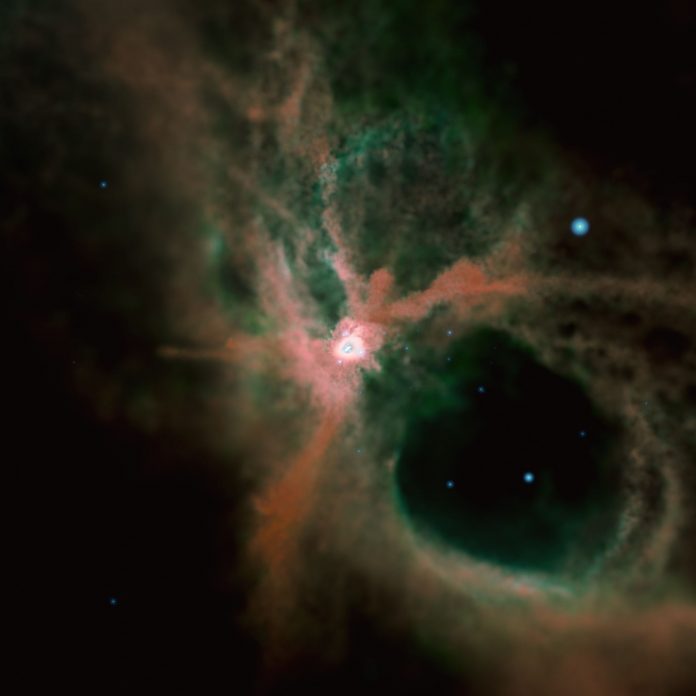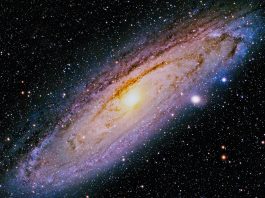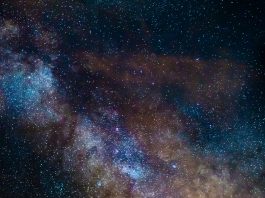A research team from the University of Tokyo developed a star cluster formation simulation that has demonstrated how ionised gas is formed.
Astronomers have established a novel code for star cluster formation simulation. When compared with the well-known case of the Orion Nebula, scientists were able to demonstrate that its off-centre bubble of ionised gas was caused by a massive star that was pushed out of the newborn cluster before falling back in.
These results appeared in the Monthly Notices of the Royal Astronomical Society on 8 June 2022.
Groups of stars are typically formed together in clouds of cold hydrogen gas
It has been observed that the brightest and most massive stars ionise the surrounding gas, which makes it too hot to form new stars. Thus, massive stars act as feedback and prevent new star formations. Scientists have emphasised that the role of these massive stars is crucial for understanding the overall process of star formation. However, in a majority of cases, such as the Orion Nebula, the ionised bubble is not centred on the most massive stars in the cluster.
Forming off-centre bubbles
To form off-centre bubbles, ionising light from the massive stars in the cluster must overcome the dense molecular gas in the cluster centre and reach the cluster’s outskirts. It is conceivable that scattered massive stars can strike a hole in the dense molecular gas in the central region to help in the formation of off-centre ionised bubbles.
The star cluster formation simulation
The research team, led by Michiko Fujii at the University of Tokyo, spent two years creating a code for a star cluster formation simulation, that can accurately replicate individual stars’ motions. They then simulated a case, similar to the Orion Nebula, utilising ATERUI II – which is operated by the National Astronomical Observatory of Japan (NAOJ) and is the world’s most influential supercomputer dedicated to astronomy simulations.
“The velocity distribution of the stars in the simulation matches the result from observations,” explained Yoshito Shimajiri, a research team member at NAOJ. “The simulations demonstrate that massive, bright, young stars can be ejected from the cluster through gravitational interactions with other stars.”
“Some of these ejected stars run away, never to return. In other cases, like what is observed in the Orion Nebula, a massive star can be thrown a distance from the cluster, where it initiates an ionised bubble, and then falls back into the cluster,” added Kohei Hattori, also at NAOJ, who performed part of the analysis.
“This simulation is not the limit of our simulation code. If we use a larger number of CPUs, it can treat even more massive star clusters. Next, we want to undertake the first star-by-star star cluster formation simulation of globular clusters, which are 100 times more massive than the star cluster we simulated in this study,” concluded Fujii.









